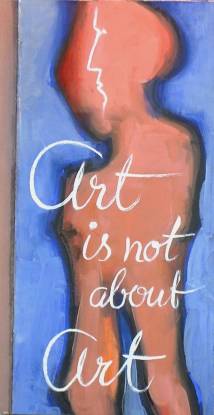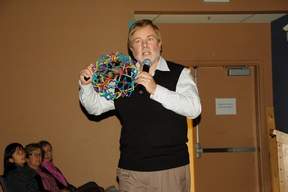News & Announcements
- Details
- Written by Joshua Wachtel
 On her web site, Julia Steiney writes: "For 20 years, I’ve been trying to understand how the public sector can successfully cultivate strong families, healthy schools and lively communities.
On her web site, Julia Steiney writes: "For 20 years, I’ve been trying to understand how the public sector can successfully cultivate strong families, healthy schools and lively communities.
"The international 'restoration' movement brings a wide range of practices under a simple philosophical umbrella. Its main technique, 'talking circles,' can be applied almost anywhere and taught to anyone, including young children and undereducated, marginalized adults. It is used to settle fights, to develop empathy in bullies and to safely engage victims and offenders in dialogue..."
- Details
- Written by Joshua Wachtel
Here's a couple clips from an article reposted in the Seattle Medium by Michael Radcliff entitled "Effective Strategies in the Prevention of Youth Violence." The article plans in a number of cities, but note the paragraph about Detroit's program which employs restorative practices.
Dr. Ben Robertson, Professor of Social Work at Southern University at New Orleans, whose published works include, “Urban Youth and Programs geared to help them Deal with Conflict Fighting and “Attitudes Towards Violence Among Urban Youth,” discussed Cultural Specific Conflict Resolution at a recent seminar on Youth Violence Interventions sponsored by Southern University at New Orleans.
- Details
- Written by Joshua Wachtel
It happens more and more these days that I read a head-line and immediately wonder why restorative justice, or restorative practices, couldn't be used in these cases. The one that caught my attention this morning was a piece originally from the Huffington Post which you can see here.
According the piece, a substitute teacher overheard the boy tell his friend another teacher was "cute." This was reported to the principal who decided to suspend the boy for two days.
- Details
- Written by Joshua Wachtel
In this two-part video from Anderson Cooper's syndicated daytime talk show, he explores a case in which a woman, injured by a bizarre and potential deadly prank, extended forgiveness to the boy who caused her so much hurt.
Two quotes from the show by Victoria Ruvolo, the victim, explaining why she forgave:
“God gave me a second chance, so I just passed it on.”
“Kids don’t think about what they do. That’s the whole point. ... Everything we do affects someone else.”
- Details
- Written by Joshua Wachtel
Listen to a recording of the 20-minute interview here:
Bob Kellogg of OneNewsNow summarizes the interview of IIRP President Ted Wachtel on Conversations with Justin Earl, Milwaukee Radio 920AM:
With zero-tolerance policies on the wane in several states, an alternative to dealing with student discipline problems appears to be working more effectively.
According to Ted Wachtel, president of the International Institute of Restorative Practices (IIRP), zero-tolerance policies have been in place for decades, but they have not been very successful.
- Details
- Written by Laura Mirsky
 “Somebody could have died that day.” That’s what a student said after a fight nearly erupted at a small Detroit high school last month. But a restorative circle squashed the tension and prevented a tragedy.
“Somebody could have died that day.” That’s what a student said after a fight nearly erupted at a small Detroit high school last month. But a restorative circle squashed the tension and prevented a tragedy.
It began in the cafeteria with an argument between two boys, but it quickly escalated, with kids taking sides, stripping off their shirts and getting into it. With some of the students claiming past affiliation with a neighborhood gang, this was serious.
The adults tried to separate the boys, but they struggled to calm the two students down.
Then a ninth grade boy stepped in: “I got this. I’ll do a circle.”
- Details
- Written by Joshua Wachtel
 Si Lewen is an amazing, now 93-year-old, artist who donated his entire catalog of life's work to IIRP to be used to promote IIRP's mission. There is much that can be said about Si, but for the moment I just want to offer a link to his web site and suggest that readers enjoy a stroll through his on-line gallery. Enjoy and please comment!
Si Lewen is an amazing, now 93-year-old, artist who donated his entire catalog of life's work to IIRP to be used to promote IIRP's mission. There is much that can be said about Si, but for the moment I just want to offer a link to his web site and suggest that readers enjoy a stroll through his on-line gallery. Enjoy and please comment!
- Details
- Written by Joshua Wachtel
Tuesday, November 28 is the last chance to book a place at this seminar in London on December 1st from noon to 5pm:
Independent Academic Research Studies and the Restorative Justice Council are pleased to invite you to a joint half-day seminar.
The seminar will launch the IARS report "Restorative Justice and the Secure Estate: Alternatives for Young People."
The report is based on a three year research programme that looked at the use of restorative justice practices in prisons. The fieldwork was carried out in the UK with a particular focus on young people in custody. The event and the IARS report is part of the "Mediation and Restorative Justice in Prison Settings" project MEREPS.
- Details
- Written by Joshua Wachtel
 Illustration from Cooperative GrocerHere's a lovely article by Jennifer Crain for Cooperative Grocer, a trade publication for food cooperatives in North America, about a food market in Olympia Washington that operates on consensus and "decided to revamp its staff accountability" to "include the adoption of restorative practices."
Illustration from Cooperative GrocerHere's a lovely article by Jennifer Crain for Cooperative Grocer, a trade publication for food cooperatives in North America, about a food market in Olympia Washington that operates on consensus and "decided to revamp its staff accountability" to "include the adoption of restorative practices."
Before the Olympia Food Co-op became a two-store operation with over 80 staff members, resolving internal conflicts was a direct but mostly informal process. If a conflict arose, such as an abrasive interaction, lateness or worker negligence, any staff member of the consensus-run collective could give direct feedback to the offending co-worker, either face-to-face or in an evaluation.
- Details
- Written by Joshua Wachtel
I'm pleased to reprint this article by Ben Ingram about a presentation given at a school by Bruce Schenk, director of IIRP Canada.
 Bruce Schenk uses a Hoberman sphere to illustrate the benefit of helping offenders to feel apologetic instead of threatened, to learn from their actions and not only be punished for them. Photo by Ben IngramA Nov. 10 presentation at Chatelech Secondary School in Sechelt discussed the benefits of adopting a restorative approach to conflict resolution in both the community and its schools.
Bruce Schenk uses a Hoberman sphere to illustrate the benefit of helping offenders to feel apologetic instead of threatened, to learn from their actions and not only be punished for them. Photo by Ben IngramA Nov. 10 presentation at Chatelech Secondary School in Sechelt discussed the benefits of adopting a restorative approach to conflict resolution in both the community and its schools.
The idea behind restorative justice is to bring together offenders and those affected by their actions in a healing environment in favour of a punitive one. Proponents say the method can strengthen the community as a whole.
As a director for the International Institute for Restorative Practices, Bruce Schenk said he’d seen the impacts of the approach and its growing popularity.

Restorative Works Year in Review 2023 (PDF)
All our donors are acknowledged annually in Restorative Works.
